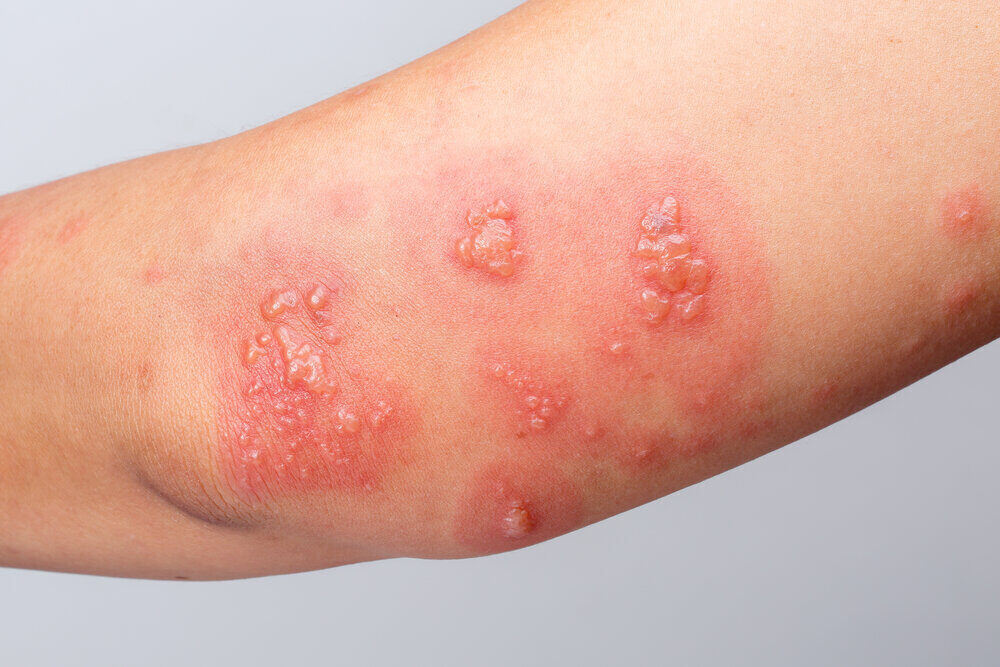A Comprehensive Guide to Safe Dating in the Age of Online Platforms
In today’s digital era, finding love or making connections through online dating platforms and apps

Do you have unusual bumps or blisters in your genital area? It could be something as benign as razor burn, skin irritation, or ingrown hair. It could also be herpes. This article breaks down ingrown hairs vs. herpes so that you can tell the difference between these two common sores.
Your hair grows straight out of your pores and away from your body. However, a shaved or tweezed hair follicle might turn around and grow into your skin. The condition causes inflammation and small painful bumps.
Men may experience ingrown hair after shaving their face. It can also happen to anyone that waxes or tweezes their body hair. While the condition will improve without treatment, it can leave the skin with pus-filled lesions called pustules and red bumps called papules.
If you want to treat your ingrown hairs, pause your current hair removal routine. Put down the razor or tweezers and stop waxing or plucking until the ingrown hairs disappear. Continuing to shave the area may increase the frequency of outbreaks.
Other ways to treat ingrown hairs include:
Treating ingrown hairs goes hand in hand with minimizing your risks of future pustules and papules. If you want to avoid ingrown hairs altogether, avoid shaving, tweezing, and waxing. You should also use a sharp razor and avoid close shaves if you do shave.
Additionally, you can wash your skin with a facial cleanser and warm water before shaving. The cleanser primes the skin and softens the hair, reducing the chances of misdirected follicles. You can also invest in an electric razor or get laser hair reduction done in a clinic to get rid of unwanted hairs.
The herpes virus manifests itself in two areas. Many people have a herpes outbreak around their penis or vagina (HSV-2). People can also have herpes simplex virus type 1 (HSV-1), a variety more commonly known as oral herpes.
If you have a genital herpes outbreak, here are the STD symptoms:
An outbreak of herpes typically occurs two to 20 days after the infection. Of course, it can remain dormant and take years for the first outbreak to occur. Once the outbreak happens, the herpes sores last for two to four weeks before disappearing.
While the bumps and blisters might go away, the virus will stay in your body forever. It can lead to repeated outbreaks, especially in the first year following the infection. Fortunately, most people find that the first herpes symptoms are the worst, and subsequent genital herpes outbreaks become less painful and shorter.
As we mentioned in the previous section, herpes comes in two forms: herpes simplex virus type 1 (HSV-1) and herpes type 2 (HSV-2). HSV-1 occurs in the mouth and lips. People can transmit it through kissing or sharing objects like food or toothbrushes.
Individuals can pass HSV-2 during sexual intercourse. The common virus affects the genitals and rectum, with the outbreaks remaining below the waist. According to the World Health Organization, 491.5 million people worldwide ages 15 to 49 have HSV-2.
There is no cure for herpes. However, you can use several treatment options to alleviate the pain and discomfort of HSV-1 and HSV-2. Doctors may prescribe an antiviral treatment to prevent the virus from multiplying and spreading.
Antiviral medication can resolve herpes symptoms in one to two days. It can also mitigate the symptom's severity. Taking medication over a long period may help reduce your chance of passing the herpes virus to your partner, too.
Genital herpes vs. ingrown hairs appears identical at first glance. A closer look can help you distinguish the two conditions. For instance, ingrown hairs occur in isolated regions while herpes resembles an outbreak.
Ingrown hairs cause a single bump or sore. That’s because you have one hair growing in the wrong direction. Herpes can spread across your lips, mouth, genitals, or rectum, leaving a trail of lesions.
If you have ingrown hair, you're unlikely to have pus build up inside the sore. The same does not apply to herpes. The virus can cause yellow discharge to erupt from lesions.
While many people compare herpes vs. a pimple or ingrown hair, other conditions cause reddish bumps, too. That includes bacterial vaginosis, yeast infections, bug bites, hemorrhoids, and genital warts. Getting a 10 panel STD test from Rapid STD Testing within two weeks of the outbreak can help provide clarity.
Distinguishing between ingrown hair vs. herpes can be tricky, especially if you don't have a medical degree. Early detection allows you to get the treatment you need so that you can move forward with your life. If your rapid herpes test comes back positive, you should alert your sexual partners.
Leaving herpes untreated can lead to complications if you do not receive proper treatment. For example, the virus may increase your chances of contracting other sexually transmitted infections. That includes pregnant mothers exposing their unborn child to herpes while giving birth.
Some people experience severe bladder problems after contracting herpes. The virus causes inflammation in the urethra, making it challenging to urinate. Individuals may need a catheter to reopen their blocked urethra.
Same-day testing for herpes allows you to stay ahead of the curve. You can take preventive measures, such as using a latex condom during intercourse, to avoid spreading the infection. Doctors may recommend pregnant women antiviral treatments to circumvent an outbreak during delivery.
The herpes virus has an incubation period of two to 12 days. If you notice genital bumps that last for more than a week, consider contacting a healthcare specialist. You can also find same-day STD testing nearby on our website.
If you’re wondering how to test for herpes, you’ve come to the right place. Rapid STD Testing has testing centers across the country. All you have to do is enter your zip code under “Find a Lab,” and we will connect you with the nearest testing location.
We offer fast and hassle-free STD testing for various sexually transmitted infections, including herpes, gonorrhea, and chlamydia. At Rapid STD Testing, we strive to deliver the highest quality service to our patients, giving them the peace of mind they need on their journey to recovery. That includes same-day results and 100% confidentiality.
Rapid STD Testing has the tools and services you need, no matter your situation. We offer packages that let you test for one or more STDs, plus testing for couples. Make an appointment online and get your herpes test in no time.
Rapid STD Testing has made it easier than ever to distinguish ingrown hairs vs. herpes. We offer convenient dual-panel tests that let you for multiple diseases at one time. Visit our website or call us at (866) 872-1888 to purchase your herpes test today.

No embarrassing exams, long waiting lines, or multiple visits. Just a quick lab visit for fast results.
Discover a lifestyle-focused approach to quality content at RapidSTDtesting.com. Unlike others, we don't rely on gimmicks or fabricated data to lure visitors. Our commitment goes beyond clicks – we're dedicated to answering the questions you search for online. With a team comprising medical experts and content specialists, our articles are meticulously crafted to promote STD testing, educate, and dismantle social stigmas.
Embrace a confidential atmosphere with our private testing options, ensuring your privacy is paramount. Every article is meticulously fact-checked and approved by medical advisors, guaranteeing accuracy and reliability. Our team, comprised of doctors and medical professionals, ensures that each piece of content serves a purpose – to inform, educate, and promote awareness.
Join us as we bridge the gap between medical expertise and lifestyle choices. RapidSTDtesting.com is your trusted source for informative, medically vetted content.